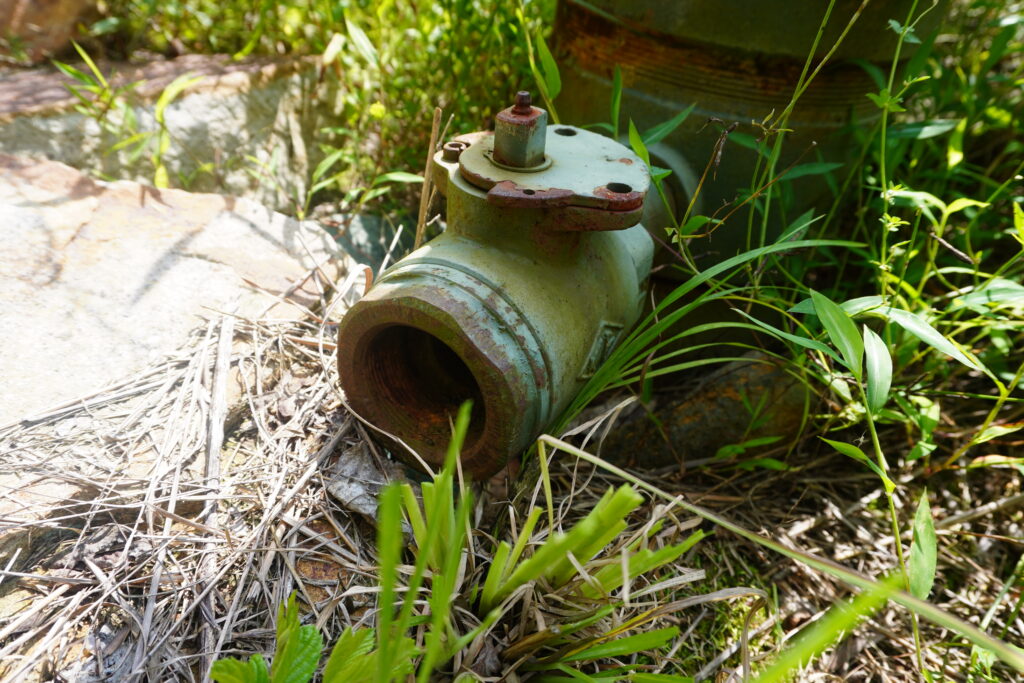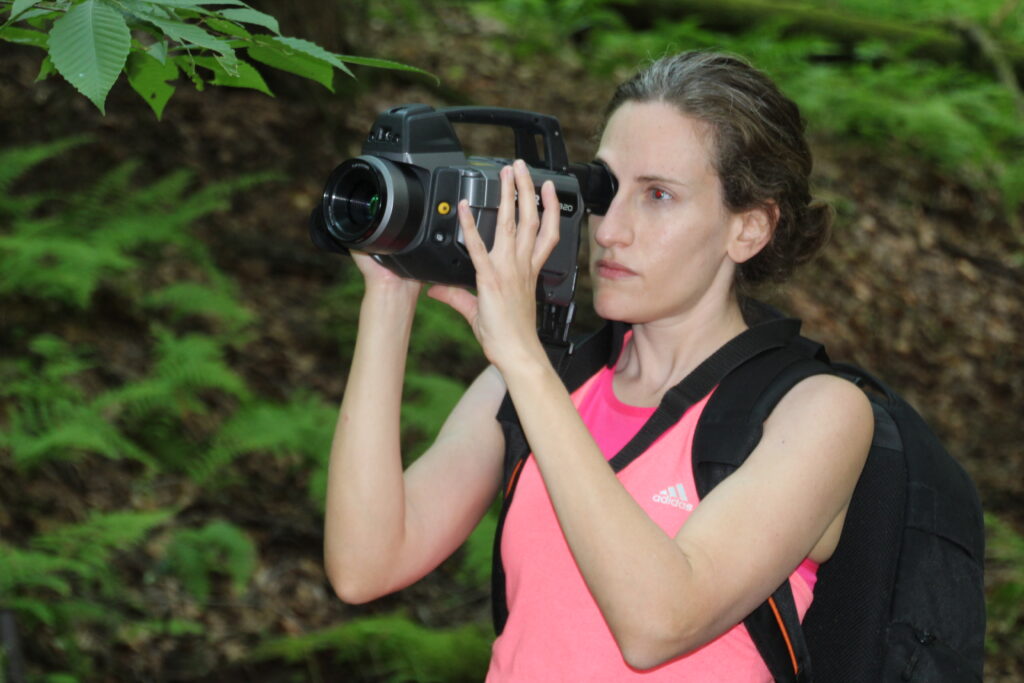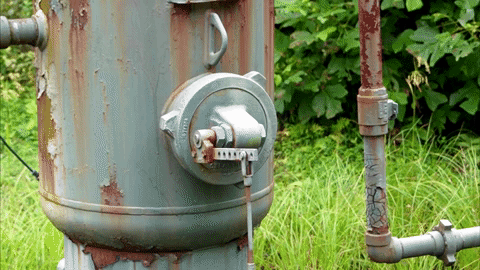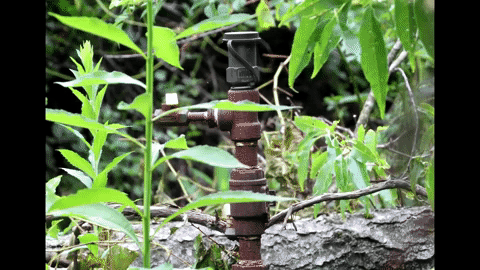
It’s time for Diversified Energy to clean up its act
Strong rules to #cutmethane can make a difference
With great power comes great responsibility. Diversified Energy has a lot of wells in the oil and gas game in multiple states across Appalachia. The sad truth, however, is that Diversified is acting more like a slumlord than a responsible actor. The result is increasing threat to public health and climate from its oil and gas pollution.



Diversified Energy has become the largest well owner in the United States by acquiring tens of thousands of old, modestly-sized wells nearing the end of their life. In the Appalachian basin, they are squeezing the last drops of profit from a dying empire of over 67,000 wells.
Under current regulations, Diversified is not required to conduct frequent inspections for harmful pollution at the vast majority of its wells. Earthworks’ own field investigations by certified thermographers have demonstrated time and again that the company’s failure to conduct frequent inspections has meant more pollution and more harm to communities and our climate.
Just because wells are nearing the end of their productive life does not mean they aren’t producing dangerous pollution. The long and short of it is that all oil and gas wells, regardless of production amounts or age, contribute to the climate crisis and pollution problems – and hundreds of thousands of even small but persistent leaks add up to a big problem. In fact, wells that produce less than 15 barrels of the oil equivalent of gas each day – and just 6 percent of national production overall – are responsible for half of the methane pollution from oil and gas well sites in the United States.
The US Environmental Protection Agency has proposed new rules for oil and gas operations that would reasonably and rightfully require frequent inspections for leaks at all well sites with equipment known to fail. The move by EPA would result in the wells with leak-prone equipment, or greater risk for pollution, receiving quarterly inspections using optical gas imaging cameras – the same kind that Earthworks uses to detect pollution. That move is warranted.
If Diversified is serious about its public relations commitments to address the outsized pollution from its wells, then it should be outspoken in supporting the strongest-ever EPA rules to address these emissions for the entire industry.
Diversified has a great responsibility
While Diversified has sunk millions of dollars into production expansion, the company has not matched this expansion with investments in pollution monitoring that uses the right tool for the job.
In 2018, Diversified announced that production more than doubled, only to later announce that it had only hired 157 well tenders to manage thousands of these newly purchased wells. Soon after, Diversified purchased 11,000 more wells with no announced increase in pollution reduction strategies. The company has made a commitment to using aerial monitoring for emissions. But while this approach may be good for finding larger pollution events known as super-emitters, the technology is unlikely to find small, persistent leaks often associated with lower-producing wells like the aging assets that make up most of Diversiied’s portfolio.
In 2021, the company deployed a mere 600 hand-held methane detection devices to detect emissions for its 67,000 wells in the Appalachian basin, but given the number of leaks we are seeing in the field with our OGI cameras it doesn’t appear that Diversified is using the right tools for the job. Diversified’s use of handheld monitors is a good start, but is simply insufficient for detecting emissions. Each technology has advantages and disadvantages for detecting different types of emission sources. For instance, Method 21 can find small component leaks but is unlikely to find physically inaccessible leaks at storage tanks or detect intermittent sources. OGI can detect most emissions but are unlikely to find intermittent sources. Screening technologies such as aerial remote sensing – which Diversified has deployed – can be used frequently to detect intermittent sources but have high detection limits and miss most sources that could be found at these marginal wells.
Children & Families at Immediate Risk
Diversified’s failure to frequently inspect all of their wells can result in a horror story for parents and communities.
In July 2022, one of Earthworks’ certified thermographers was conducting an investigation at a thousand-acre county park east of Pittsburgh that includes ball fields, a wave pool, archery range, countless trails, and even a downhill ski slope. To say that Boyce Park is a place where families congregate year round is an understatement – the park teems with year round activities, including hiking and biking in the summer and skiing during colder months.
During that investigation, an 80-year-old well owned by Diversified was found to be leaking a massive, unchecked plume of methane and health-hazardous pollution into the air. Sounds of kids joyfully screaming and playing were within earshot.

Just a few weeks later and merely a county away, another example of Diversified’s problem was documented. During this investigation, Earthworks’ thermographer documented abnormal emissions at a troubling 18 of 33 (or 54%) Diversified well sites.
Thankfully, the U.S. EPA is proposing to require inspections at well sites like these that have equipment that can fail and lead to pollution issues. The EPA will be taking public comments on this rule through February 13th, 2023. We think Diversified should incorporate frequent inspections with an optical gas imaging camera which can literally see the methane being emitted. These cameras are used by trained and certified thermographers and the industry standard for finding pollution on the ground. OGI can be especially effective at these older, smaller wells.
All wells are part of the problem
In our experience in the field, all oil and gas wells are prone to pollute. That is why the EPA has rightly recognized that production levels are no longer an appropriate way to determine inspection requirements. Oil and gas is a dirty industry, and the only way to truly stop the pollution is to stop the industry’s expansion and transition to clean, renewable energy. Short of that, the enforcement of strong regulations requiring frequent inspections with effective pollution-detection equipment is what makes a difference in reducing the immediate harms to people and communities.
Many older, modestly-sized wells like the ones owned by Diversified dot the American landscape in the hundreds of thousands. As mentioned before, while these types of wells account for only 6% of US oil and gas production, they are responsible for roughly half of US emissions from the industry. Overwhelmingly, these wells are owned by larger companies, such as Diversified,with the resources to cut pollution.
In fact, ninety-two percent (92%) of these low-producing, aging wells are owned by companies that own 25 or more sites. Seventy-five percent (75%) are owned by companies like Diversified with over $300 million in annual revenue and 100 or more sites apiece.
Just as alarming, research by Dr. Amy Townsend-Small of the University of Cincinnati found many wells in the Appalachian region produce less than a barrel of oil per day yet pollute into the atmosphere MORE THAN 100 percent of their reported gas production. Again, the amount of oil or gas a well produces doesn’t determine the likelihood of malfunctions that lead to pollution. There’s no question. These smaller wells are big problems.
EPA Can Make A Difference
Slumlords are notorious for being absent, cutting corners and ignoring even the most basic maintenance needs of their properties. Diversified is acting like the worst kind of slumlord, profiting at the expense of nearby residents’ health and our climate.
Residents of the Appalachian region are rightly fed up, with nearly two-thirds of Pennsylvania voters in a recent poll favoring new rules to reduce methane pollution from oil and gas operations including small wells with leak-prone equipment.
The stakes are far too high for the 17.3 million people who live near old and gas extraction in the US and the planet. We need companies like Diversified to step up and commit to regular inspections at their wells with equipment known to fail using an optical gas imaging camera – the best, most cost-effective way to find leaks on the ground. We also need to lower the threshold for controls at storage tanks, a major source of emissions. And, we need Diversified to join the growing chorus of industry operators who support comprehensive and common sense methane rules by the EPA.
The children and families in Boyce Park – and throughout Pennsylvania as well as Appalachia – deserve nothing less from Diversified. Slowing the climate crisis to prevent catastrophe demands support for strong EPA rules as the bare minimum for oil and gas operators continuing to harm our planet.
Now is the time for Diversified to clean up its act.
